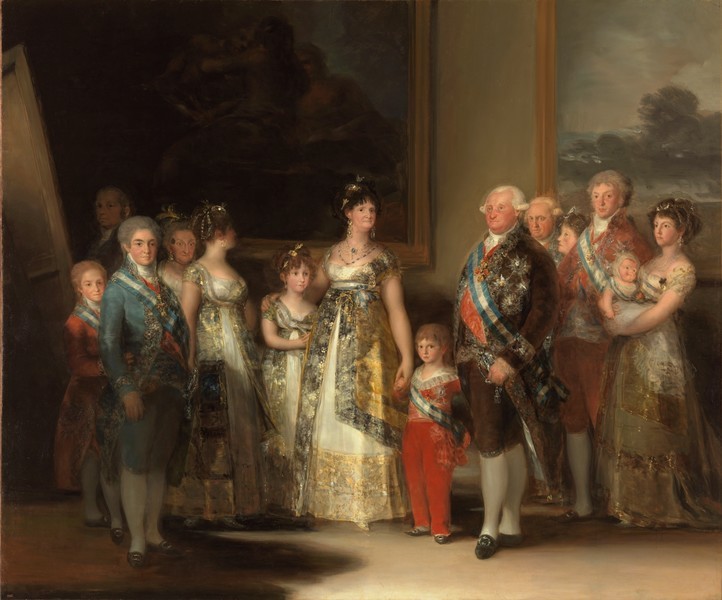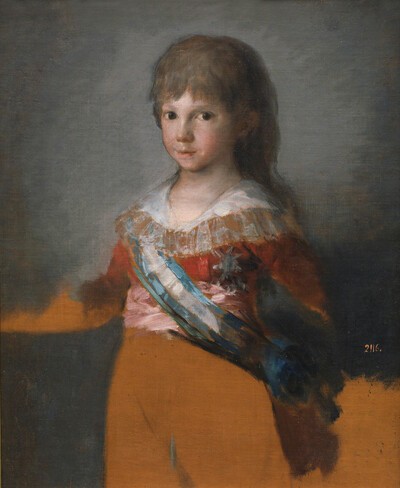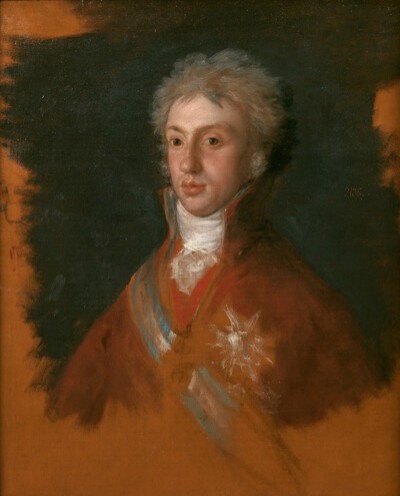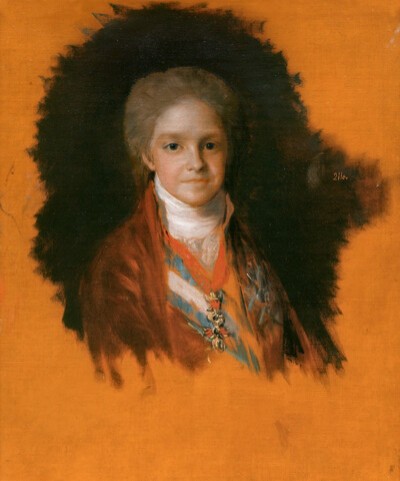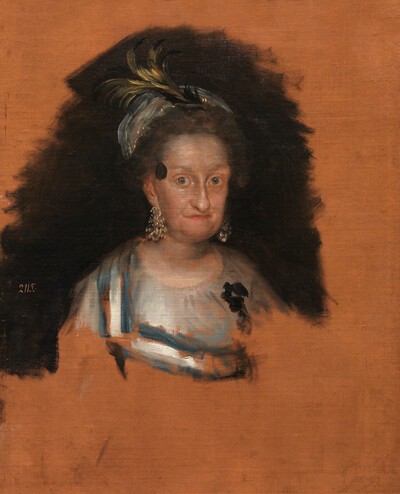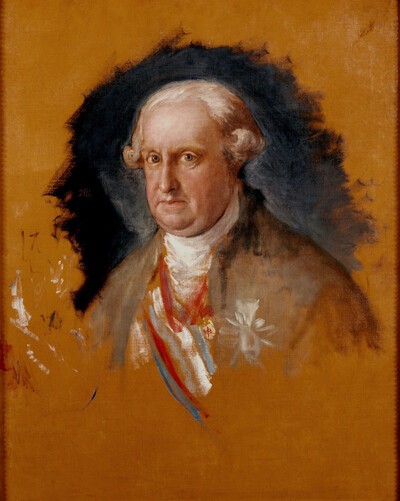- Cronología
- 1800
- Ubicación
- The Prado National Museum. Madrid, Madrid, Spain
- Dimensiones
- 280 x 336 cm
- Técnica y soporte
- Oil on canvas
- Reconocimiento de la autoría de Goya
- Undisputed work
- Titular
- El Prado National Museum
- Ficha: realización/revisión
- 03 Mar 2010 / 16 Jun 2023
- Inventario
- (P00726)
This work came from the Royal Collection. In 1814 it was in the Royal Palace in Madrid and in 1824 it formed part of the collections of the Prado Museum, appearing in the museum's catalogue for the first time in 1872.
The painting, clearly conceived as a dynastic portrait, was made between Aranjuez, where Goya would have made the preparatory drawings, and Madrid, in the spring and summer of 1800, shortly after Goya was named First Court Painter (1799).
This large group portrait, set in a room decorated with other paintings and lit from the left-hand side, is presided over by King Charles IV (1748-1819) and Queen María Luisa de Parma (1751-1818), in the centre of the composition. Beside them are their children, the Infanta María Isabel (1789-1848) and the Infante Francisco de Paula (1794-1865). The group to the left of them features, in the front, the Prince of Asturias and future King Ferdinand VII (1784-1833), dressed in blue; behind him the Infante Carlos María Isidro (1788-1855), second in succession to the throne; the Infanta María Josefa (1744-1801), the king's sister; an unidentified young woman; and, in the shadows at the back, Goya, painting at a large canvas. In the group on the right is the Infante Antonio Pascual (1755-1817), the king's brother. Behind him are the Infanta Carlota Joaquina (1775-1830), Queen of Portugal and eldest daughter of the king and queen; the Prince and Princess of Parma: the Infanta María Luisa (1782-1824), holding her son the Infante Carlos Luis; and her husband, Luis de Bourbon (1799-1883), the future King of Etruria.
All of the men are wearing the sash of the Order of Charles III, and some of them are also wearing the medal of the Golden Fleece. The women are wearing Empire line dresses and bear the sash of the Order of María Luisa. Charles IV is also sporting the insignia of the Military Orders and of the Portuguese Order of Christ.
The formal and compositional references to Las Meninas are clear, demonstrating the admiration that Goya felt for Velázquez.
This was the first work by Goya to enter the Prado Museum. In 1834 it was valued at 80,000 reales.
Margarita Moreno tells us that the original canvas, formed by three pieces of cloth, has been relined. Scratches are visible on the surface, caused by the spreading of the reddish-coloured preparation. The craquelure in the paint has been reduced due to the relining. Those areas where paint had been lost have been retouched and these restored areas have changed over time. The varnish has yellowed, and there are stains and blanching due to surface dirt. Manuel Arpe restored the work in 1967
-
Les chefs-d’œuvre du Musée du PradoMusée d’Art et d’HistoireGeneva1939consultant editors Fernando Álvarez de Sotomayor y Pedro Muguruza Otaño. From June to September 1939cat. 9
-
Goya. La década de Los CaprichosMadrid1992organized by Real Academia de Bellas Artes de San Fernando sponsored by Fundación Central Hispano, Madrid, consultant editor Nigel Glendinnig. From October 26th 1992 to January 10th 1993cat. 7
-
Goya. 250 AniversarioMuseo Nacional del PradoMadrid1996consultant editor Juan J. Luna. From March 29th to June 2nd 1996cat. 110
-
Goya en tiempos de guerraMuseo Nacional del PradoMadrid2008consultant editor Manuela B. Mena Marqués, from April 14th to July 13th 2008
-
Goya: Order and disorderMuseum of Fine ArtsBoston2014cat. 10
-
La familia de Carlos IVBarcelonaJuventud1944
-
Vie et ouvre de Francisco de GoyaParísOffice du livre1970p. 196, cat. 783
-
BarcelonaPolígrafa1970vol. I, p. 312, cat. 434
-
Francisco de Goya, 4 vols.ZaragozaCaja de Ahorros de Zaragoza, Aragón y Rioja1980-1982vol. III, pp. 124-126
-
Goya. 250 AniversarioMadridMuseo del Prado1996pp. 206, 207 (il.), 208 (det.), 383, 384
-
Goya: Order & DisorderBostonMuseum of Fine Arts Boston Publications2014pp. 40-41
